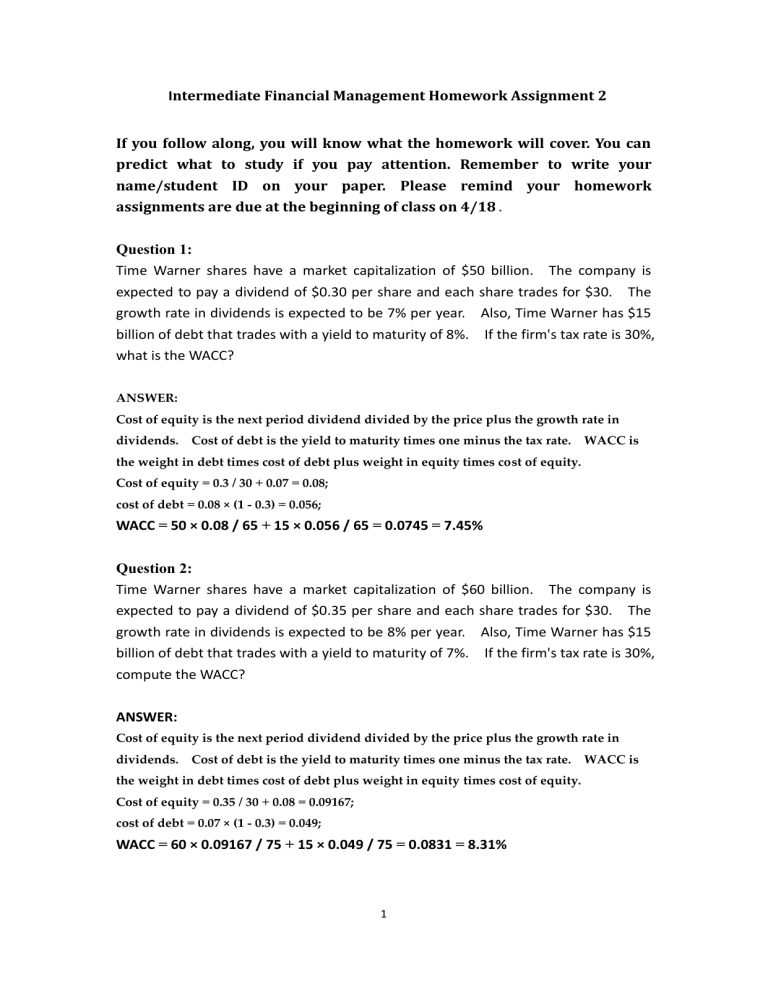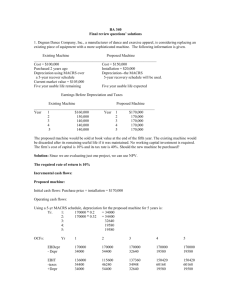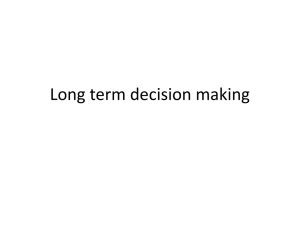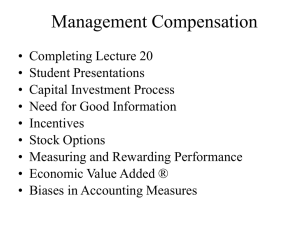Homework Assignment 2_Answer

I ntermediate Financial Management Homework Assignment 2
If you follow along, you will know what the homework will cover. You can predict what to study if you pay attention. Remember to write your name/student ID on your paper. Please remind your homework
assignments are due at the beginning of class on 4/18 .
Question 1:
Time Warner shares have a market capitalization of $50 billion. The company is expected to pay a dividend of $0.30 per share and each share trades for $30. The growth rate in dividends is expected to be 7% per year. Also, Time Warner has $15 billion of debt that trades with a yield to maturity of 8%. If the firm's tax rate is 30%, what is the WACC?
ANSWER:
Cost of equity is the next period dividend divided by the price plus the growth rate in dividends. Cost of debt is the yield to maturity times one minus the tax rate. WACC is the weight in debt times cost of debt plus weight in equity times cost of equity.
Cost of equity = 0.3 / 30 + 0.07 = 0.08; cost of debt = 0.08 × (1 0.3) = 0.056;
WACC = 50 × 0.08 / 65 + 15 × 0.056 / 65 = 0.0745 = 7.45%
Question 2:
Time Warner shares have a market capitalization of $60 billion. The company is expected to pay a dividend of $0.35 per share and each share trades for $30. The growth rate in dividends is expected to be 8% per year. Also, Time Warner has $15 billion of debt that trades with a yield to maturity of 7%. If the firm's tax rate is 30%, compute the WACC?
ANSWER:
Cost of equity is the next period dividend divided by the price plus the growth rate in dividends. Cost of debt is the yield to maturity times one minus the tax rate. WACC is the weight in debt times cost of debt plus weight in equity times cost of equity.
Cost of equity = 0.35 / 30 + 0.08 = 0.09167; cost of debt = 0.07 × (1 0.3) = 0.049;
WACC = 60 × 0.09167 / 75 + 15 × 0.049 / 75 = 0.0831 = 8.31%
1
Question 3:
General Motors has a weighted average cost of capital of 9%. GM is considering investing in a new plant that will save the company $25 million over each of the first two years, and then $10 million each year thereafter. If the investment is $100 million, what is the net present value (NPV) of the project?
ANSWER:
Compute the present value of future cash flows using the WACC, and subtract the investment cost.
Present value of perpetuity = 10 / 0.09 = 111.111
NPV = 100 + 25 / (1.09) + (25 + 111.111) / (1.09)^2 = $37.5 million
Question4:
Ford Motors expects a new hybrid engine project to produce incremental cash flows of $100 million each year and expects these to grow at 4% each year. The upfront project costs are $900 million and Ford's weighted average cost of capital is 9%. If the issuance costs for external finances are $10 million, what is the net present value
(NPV) of the project?
ANSWER:
Compute present value of the cash flows at WACC and subtract investment costs as well as issuance costs.
PV project cash inflows = 100 / (0.09 0.04) = 2000; cash outflows = 900 + 10 = 910;
NPV = 2000 910 = $1090 million
Question5:
A firm is considering acquiring a competitor. The firm plans on offering $200 million for the competitor. The firm will need to issue new debt and equity to finance the acquisition. You estimate the issuance costs to be $10 million. The acquisition will generate an incremental free cash flow of $25 million in the first year and this cash flow is expected to grow at an annual rate of 3% forever. If the firm's WACC is 13%, what is the value of this project?
ANSWER:
NPV = FCF0 + FCF1/(rWACC g)
FCF0 = $200 $10 = $210
NPV = $210 + $25/(.13 .03) = $40 million
2





![Question 2 [15 points]](http://s3.studylib.net/store/data/008612667_1-3c6e0662f7bbfa111ea1fe6b58f8cdef-300x300.png)





